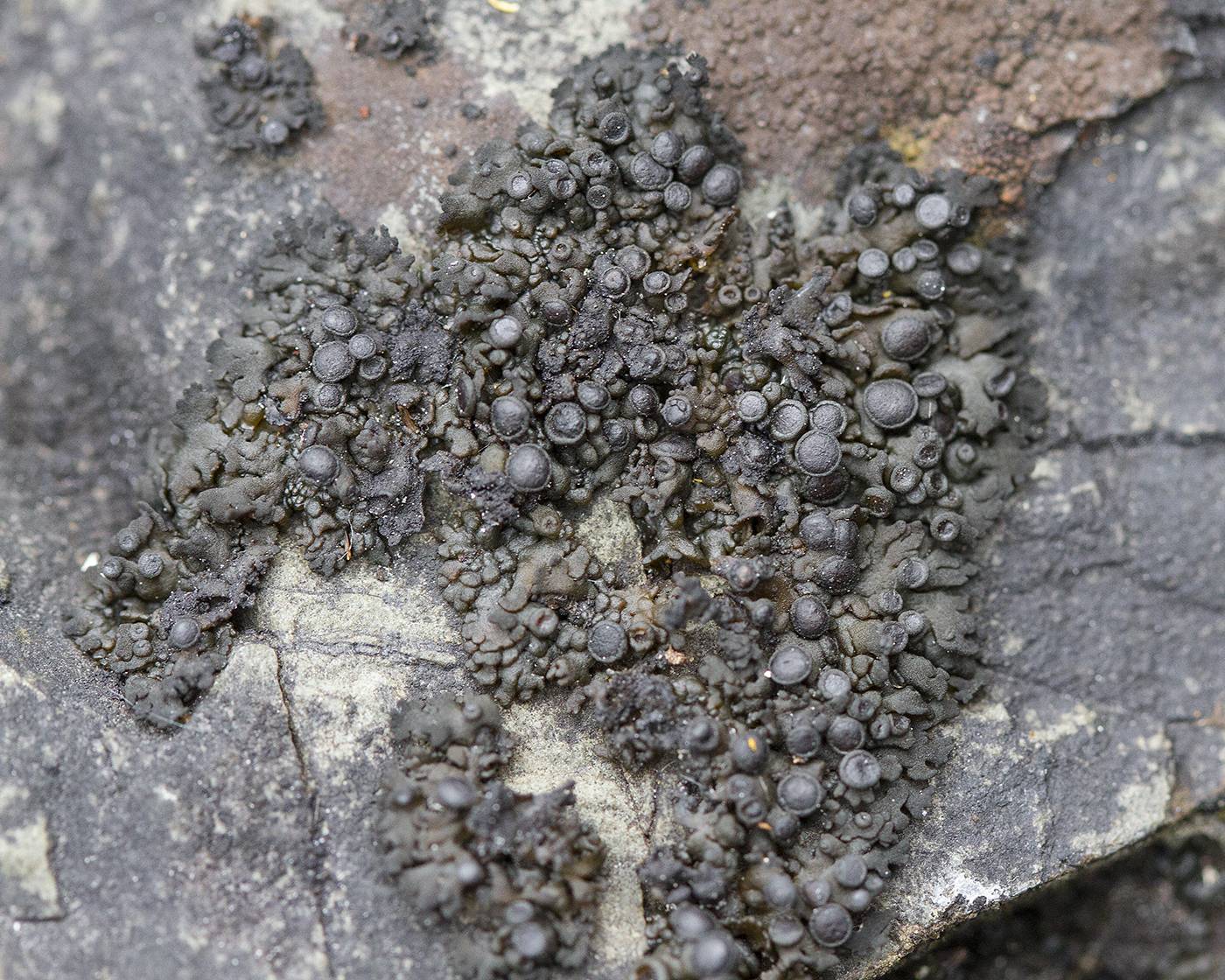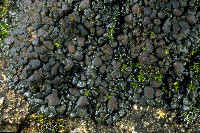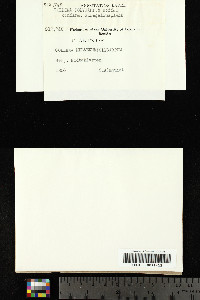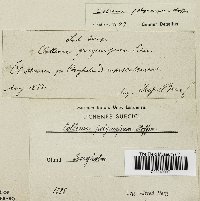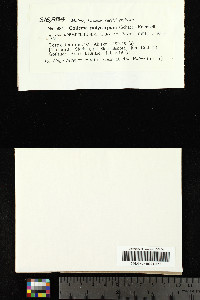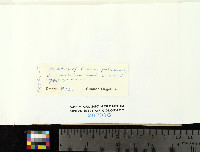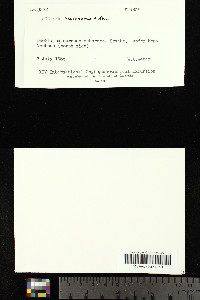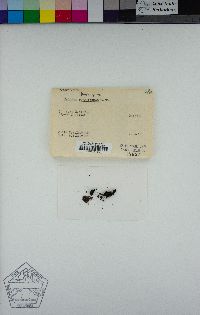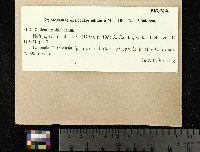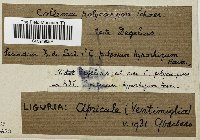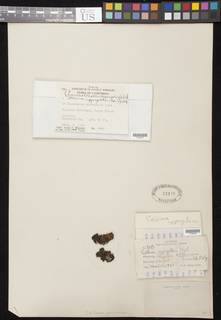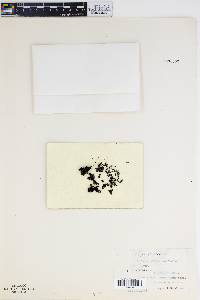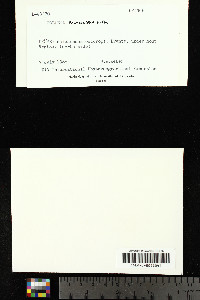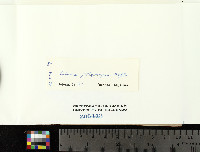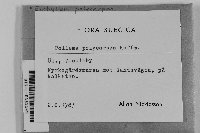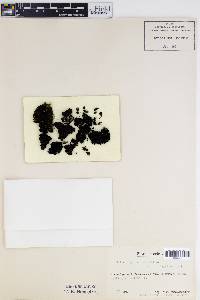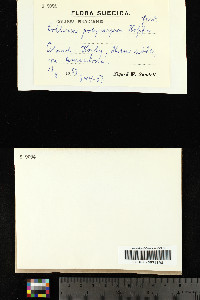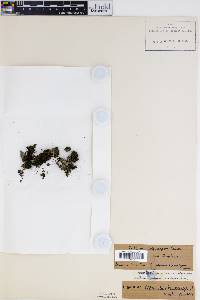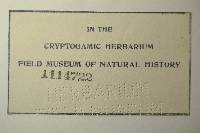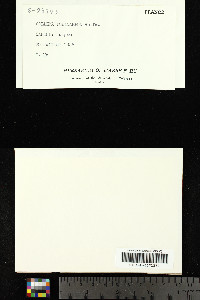
Consortium of Lichen Herbaria
- building a Global Consortium of Bryophytes and Lichens as keystones of cryptobiotic communities -
- Home
- Search
- Images
- Species Checklists
- US States: O-Z >
- US National Parks
- Central America
- South America
- US National Parks
- Southern Subpolar Region
|
|
|
|
Family: Collemataceae
[Collema melaenum var. polycarpon (Hoffm.) Nyl., moreCollema polycarpon Hoffm., Eucollema polycarpon (Hoffm.) Horw., Lethagrium polycarpon (Hoffm.) Arnold, Parmelia multifida var. polycarpon (Hoffm.) Schaer., Synechoblastus polycarpus (Hoffm.) Dalla Torre & Sarnth., Synechoblastus wyomingensis Fink ex J. Hedrick] |
Nash, T.H., Ryan, B.D., Gries, C., Bungartz, F., (eds.) 2004. Lichen Flora of the Greater Sonoran Desert Region. Vol 2. Thallus: foliose, forming rosette-like cushions, medium-sized to large, 2-6(-10) cm wide, rounded, deeply branched lobes: radiating, elongated, 1-2.5 mm wide, 0.20.3(-0.45) mm thick (moist), deeply branched; lobules: numerous, ±flattened, contiguous, ascending or erect towards the center of thallus, often channeled towards apices; tips: swollen and plicate upper surface: dark olive-green to black, dull, epruinose isidia: absent lower surface: usually somewhat paler than upper surface, with whitish tufts of rhizines Apothecia: numerous, crowded towards thallus center, terminal on tip of lobules or marginal on lobes, sessile, with constricted base to stipitate, mostly appearing stalked, 0.5-1.5 mm wide disc: plane to slightly convex, red, red-brown or black, smooth, generally glossy, epruinose thalline margin: rather thin, entire, smooth, not or little prominent, ±persistent, lacking a pseudocortex proper exciple: rather thin, ±subparaplectenchymatous to small-celled (up to 8.5 µm) euparaplectenchymatous hymenium: hyaline, 65-106 µm tall asci: subcylindrical to clavate, 8-spored ascospores: hyaline, fusiform, rarely suboblong, ends acute to rarely somewhat rounded, (2-3)4-celled, (13-)18-28(-30) x (5-)6.5-8.5 µm Pycnidia: laminal or marginal, ±globose, pale conidia: straight or slightly curved, bacilliform, usually with swollen ends, 5-6.5 x 1-1.5 µm Spot tests: all negative Secondary metabolites: none detected. Substrate and ecology: on hard, usually calcareous rocks, also on acidic rocks, in exposed, periodically wet microhabitats World distribution: North America, Greenland, Europe, northern Africa, the Near East, eastern Africa, South Africa, and India Sonoran distribution: throughout the mountains of Arizona, southern California and Chihuahua; var. corcyrense occurs from mid to higher elevations in central and southern Arizona. Notes: Collema polycarpon is characterized by elongated, deeply branched lobes with ascending margins or erect lobules and numerous, sessile to stipitate apothecia. In Col-lema cristatum the lobes are crisped and the margins are not swollen and plicate. Collema texanum has elongated, channeled lobes with down curved margins, lacks erect lobules and has 2-celled ascospores. Habitually, Collema polycarpon var. corcyrense is closer to broad-lobed forms of Collema tenax (e.g. var. vulgare) and looks quite different from the main variety. It differs from the main variety in the euthy- to subparaplectenchymatous proper exciple. The thallus is irregularly rosette-shaped with lobes 1-3 mm wide, the tips typically folded and plicate. The lobe margins and accessory lobules may become erect. Few to abundant isidia are sometimes found. They are globose at first, finally club-shaped or scale-like. Isidia are unknown in the main variety. According to Degelius (1954: p.p. 177 & 227), Collema polycarpon var. corcyrense is best separated from C. tenax var. vulgare by its rocky substrate. Actually, all 12 specimens identified here as var. corcyrense were found on acidic rock (granite, rhyolite, schist) in seepage tracks and similar sites from mid to higher elevations. The spore septation, however, was found to be variable ranging from 2- to 4-celled. |
|
|
|
Powered by Symbiota

